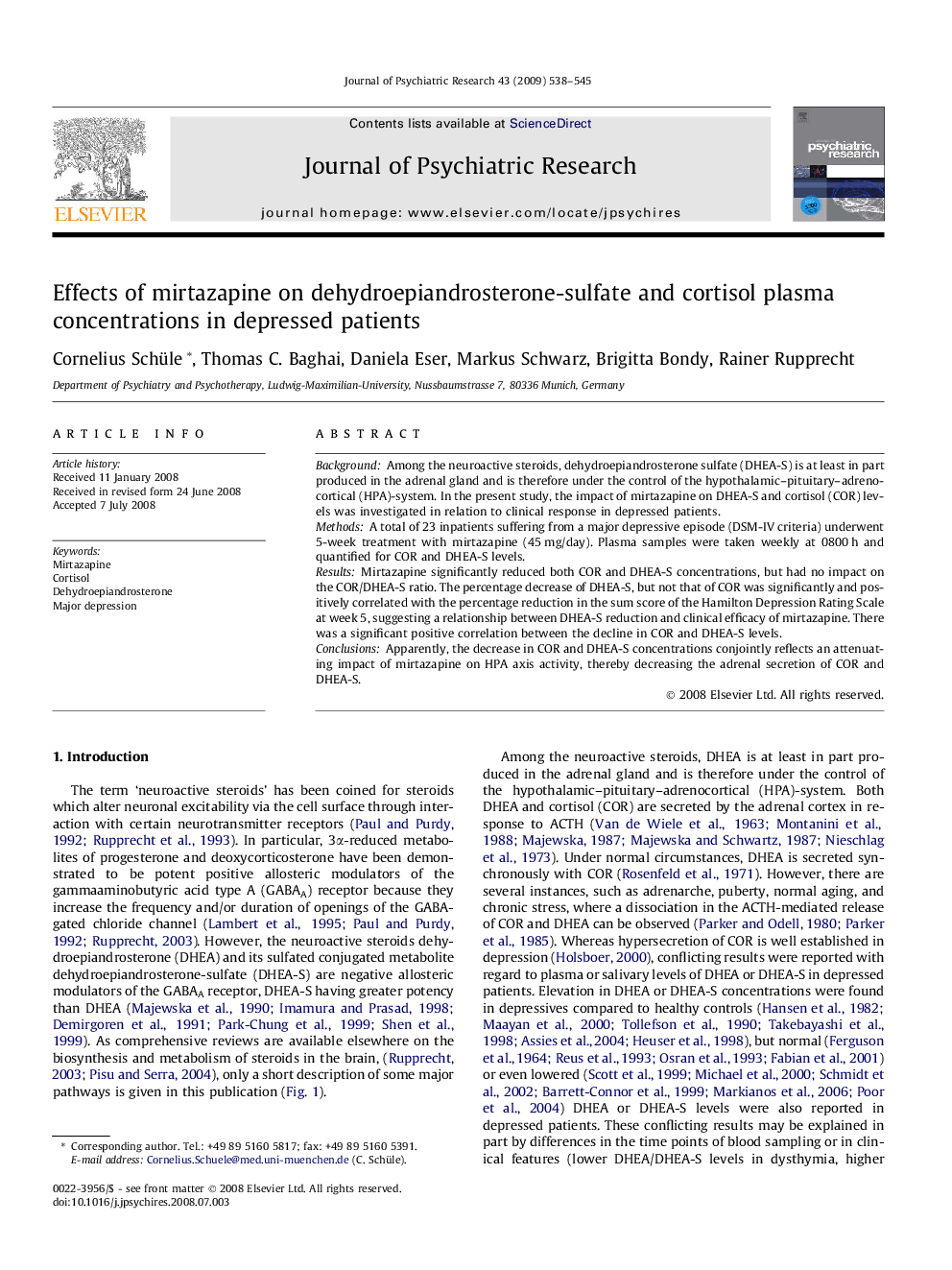| Article ID | Journal | Published Year | Pages | File Type |
|---|---|---|---|---|
| 327824 | Journal of Psychiatric Research | 2009 | 8 Pages |
BackgroundAmong the neuroactive steroids, dehydroepiandrosterone sulfate (DHEA-S) is at least in part produced in the adrenal gland and is therefore under the control of the hypothalamic–pituitary–adrenocortical (HPA)-system. In the present study, the impact of mirtazapine on DHEA-S and cortisol (COR) levels was investigated in relation to clinical response in depressed patients.MethodsA total of 23 inpatients suffering from a major depressive episode (DSM-IV criteria) underwent 5-week treatment with mirtazapine (45 mg/day). Plasma samples were taken weekly at 0800 h and quantified for COR and DHEA-S levels.ResultsMirtazapine significantly reduced both COR and DHEA-S concentrations, but had no impact on the COR/DHEA-S ratio. The percentage decrease of DHEA-S, but not that of COR was significantly and positively correlated with the percentage reduction in the sum score of the Hamilton Depression Rating Scale at week 5, suggesting a relationship between DHEA-S reduction and clinical efficacy of mirtazapine. There was a significant positive correlation between the decline in COR and DHEA-S levels.ConclusionsApparently, the decrease in COR and DHEA-S concentrations conjointly reflects an attenuating impact of mirtazapine on HPA axis activity, thereby decreasing the adrenal secretion of COR and DHEA-S.
